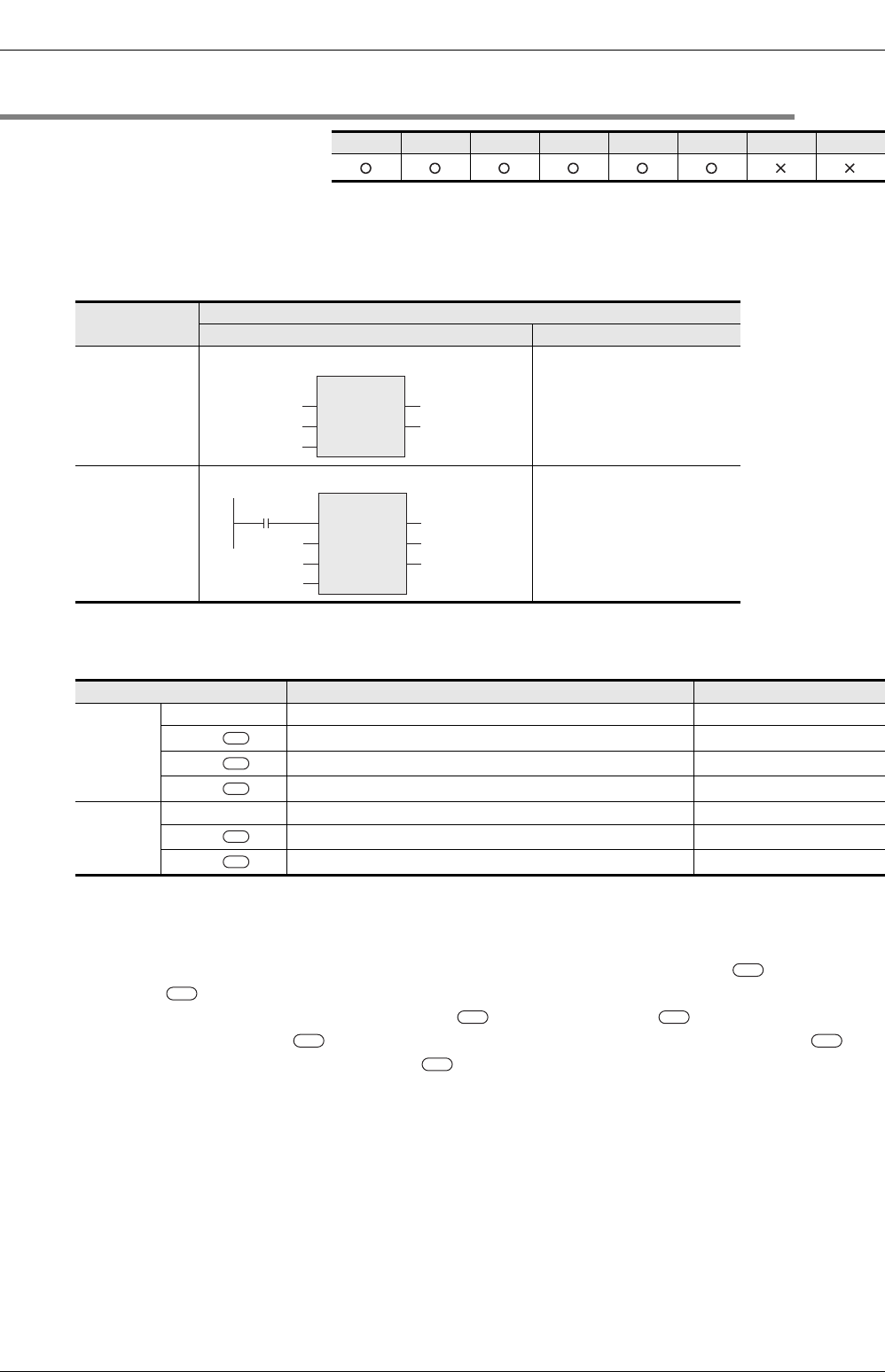User's Manual
Table Of Contents
- Front Cover
- Manual number
- Table of Contents
- Positioning of This Manual
- Related Manuals
- Generic Names and Abbreviations Used in Manuals
- 1. Outline
- 2. Function List
- 2.1 Type Conversion Functions
- 2.2 Standard Functions Of One Numeric Variable
- 2.3 Standard Arithmetic Functions
- 2.4 Standard Bit Shift Functions
- 2.5 Standard Bitwise Boolean Functions
- 2.6 Standard Selection Functions
- 2.7 Standard Comparison Functions
- 2.8 Standard Character String Functions
- 2.9 Functions Of Time Data Types
- 2.10 Standard Function Blocks
- 3. Function Construction
- 4. How to Read Explanation of Functions
- 5. Applied Functions
- 5.1 Type Conversion Functions
- 5.1.1 BOOL_TO_INT(_E)
- 5.1.2 BOOL_TO_DINT(_E)
- 5.1.3 BOOL_TO_STR(_E)
- 5.1.4 BOOL_TO_WORD(_E)
- 5.1.5 BOOL_TO_DWORD(_E)
- 5.1.6 BOOL_TO_TIME(_E)
- 5.1.7 INT_TO_DINT(_E)
- 5.1.8 DINT_TO_INT(_E)
- 5.1.9 INT_TO_BOOL(_E)
- 5.1.10 DINT_TO_BOOL(_E)
- 5.1.11 INT_TO_REAL(_E)
- 5.1.12 DINT_TO_REAL(_E)
- 5.1.13 INT_TO_STR(_E)
- 5.1.14 DINT_TO_STR(_E)
- 5.1.15 INT_TO_WORD(_E)
- 5.1.16 DINT_TO_WORD(_E)
- 5.1.17 INT_TO_DWORD(_E)
- 5.1.18 DINT_TO_DWORD(_E)
- 5.1.19 INT_TO_BCD(_E)
- 5.1.20 DINT_TO_BCD(_E)
- 5.1.21 INT_TO_TIME(_E)
- 5.1.22 DINT_TO_TIME(_E)
- 5.1.23 REAL_TO_INT(_E)
- 5.1.24 REAL_TO_DINT(_E)
- 5.1.25 REAL_TO_STR(_E)
- 5.1.26 WORD_TO_BOOL(_E)
- 5.1.27 DWORD_TO_BOOL(_E)
- 5.1.28 WORD_TO_INT(_E)
- 5.1.29 WORD_TO_DINT(_E)
- 5.1.30 DWORD_TO_INT(_E)
- 5.1.31 DWORD_TO_DINT(_E)
- 5.1.32 WORD_TO_DWORD(_E)
- 5.1.33 DWORD_TO_WORD(_E)
- 5.1.34 WORD_TO_TIME(_E)
- 5.1.35 DWORD_TO_TIME(_E)
- 5.1.36 STR_TO_BOOL(_E)
- 5.1.37 STR_TO_INT(_E)
- 5.1.38 STR_TO_DINT(_E)
- 5.1.39 STR_TO_REAL(_E)
- 5.1.40 STR_TO_TIME(_E)
- 5.1.41 BCD_TO_INT(_E)
- 5.1.42 BCD_TO_DINT(_E)
- 5.1.43 TIME_TO_BOOL(_E)
- 5.1.44 TIME_TO_INT(_E)
- 5.1.45 TIME_TO_DINT(_E)
- 5.1.46 TIME_TO_STR(_E)
- 5.1.47 TIME_TO_WORD(_E)
- 5.1.48 TIME_TO_DWORD(_E)
- 5.2 Standard Functions Of One Numeric Variable
- 5.3 Standard Arithmetic Functions
- 5.4 Standard Bit Shift Functions
- 5.5 Standard Bitwise Boolean Functions
- 5.6 Standard Selection Functions
- 5.7 Standard Comparison Functions
- 5.8 Standard Character String Functions
- 5.9 Functions Of Time Data Types
- 5.1 Type Conversion Functions
- 6. Standard Function Blocks
- Appendix A: Correspondence between Devices and Addresses
- Warranty
- Revision History
- Back Cover

6 Standard Function Blocks
6.3 CTU(_E)
210
FXCPU Structured Programming Manual
(Application Functions)
6.3 CTU(_E)
Outline
This function block counts up the number of times of rising of a signal.
1. Format
*1. Refer to caution points.
2. Set data
In explanation of functions, I/O variables inside ( ) are described.
Explanation of function and operation
This function block counts up (adds "1" to) the value stored in a device specified in when a device
specified in turns ON.
When the count value reaches a value specified in , a device specified in turns ON.
When a device specified in turns ON, this function block turns OFF a device specified in , and
resets the count value of a device specified in .
Cautions
1) Use the function having "_E" in its name to connect a bus.
2) Expression of function blocks in each language
*1. Set the instance when using a function block.
Describe the instance name when programming a function block.
FX3U(C) FX3G FX2N(C) FX1N(C) FX1S
FX
U
/FX
2C
FX0N FX0(S)
Function name
Expression in each language
Structured ladder ST
CTU
CTU(CU,RESET,PV); *1
Example:
Instance name(CU:=M0,
RESET=M10, PV=D0);
M20:=Instance name.Q;
D10:=Instance name.CV;
CTU_E
CTU_E(EN,CU,RESET,PV); *1
Example:
Instance name(EN=X000,
CU:=M0, RESET=M10, PV=D0);
M20:=Instance name.Q;
D10:=Instance name.CV;
Variable Description Data type
Input
variable
EN Execution condition Bit
CU ( )
Count source signal Bit
RESET ( )
Reset input signal Bit
PV ( )
Counter set value Word [signed]
Output
variable
ENO Execution status Bit
Q()
Count-up output signal Bit
CV ( )
Number of times of rising Word [signed]
CTU
Q
M20CUM0
CV D10RESETM10
PVD0
Instance name
CTU_E
EN ENO
Q
M20
X000
CUM0
CV D10RESETM10
PVD0
Instance name
s1
s2
n
d1
d2
d2
s1
n d1
s2 d1
d2










